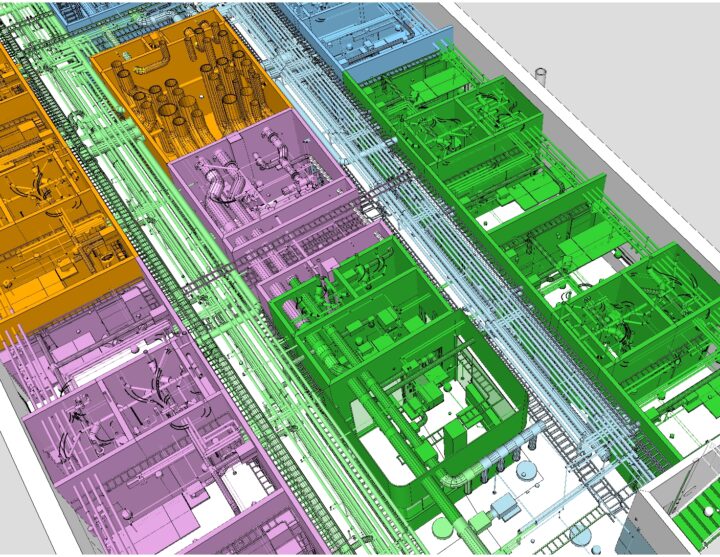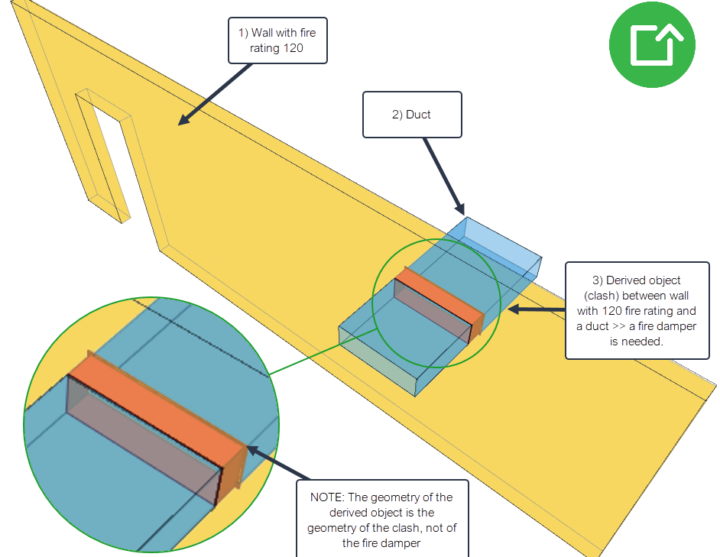Top 5 BIM-data related challenges faced by all construction companies
27.05.2022
Virtually all construction companies are struggling with similar problems that have the same root cause, says our new Head of BIM Services, Maria Lennox.
Lennox, who has been using data modelling tools for the last decade, says construction companies all have to deal with raw BIM data which typically presents them with the following five challenges:
1. Inconsistent data
Inconsistent data is the construction industry’s largest challenge.
Collating BIM data from multiple sources, from different software, at different times, from differing stakeholders, makes it inconsistent.
This means it’s almost impossible for BIM Managers to use the data at a practical level because it hasn’t been standardised.
Solution
Raw BIM data needs to be put in order so that it can be enriched and then utilised to its full potential.
Standardising and enriching the information contained in the BIM models, for example by using Simplebim, means stakeholders within the construction project, such as project managers, quantity surveyors and digital engineers etc., can make more data-informed decisions.
Simplebim enables BIM managers to have full control to both standardise and enrich data inside IFC-models.
Maria Lennox, Head of BIM Services, Simplebim
2. Designers’ data is just the starting point
The data produced by the designers is just the starting point of the BIM journey.
Typically, the designers’ models contain huge volumes of data which is hard for the recipient to use in a meaningful or dynamic way.
For the data to be used effectively, it needs to be automatically enriched, making it fit for purpose. The challenge is that it’s hard enrich the model automatically if the data is not consistent (see above).
Solution
However, if the data is first transformed and standardised, it can then be automatically enriched so project managers, quantity surveyors, digital engineers etc. can process, modify and refine the models, making them more dynamic and serviceable.
This means they will be able to make data-driven decisions, such as calculating quantities 100 or 1000 times faster than doing it manually.
Plus, without needing an army of BIM managers, data can be easily filtered, selected and processed as needed by multiple stakeholders within a construction project. For example, classifying building elements and defining locations automatically.
3. BIM template too complex
More often than not, data collected in a BIM model is inaccurate, incomplete or inconsistent. This is because the template is often too complex, asking for too much data.
Ironically, over the years, the more requirements and guidelines the designers have had to input, often manually, the more inaccurate the data has become.
Solution
A solution to this problem is to reduce the data requirements needed.
Setting fewer data requirements means the designers have less data to manage, check and maintain. This makes it easier to keep the model in good condition, and thus easier to review/use and results in a good quality outcome.
By using Simplebim, which needs less information from the designers, BIM specialists can enrich the data in a centralized and automatic way, simplifying the workflow.
This means the BIM specialist can even create ready-made views of the data which can be used in a scalable way.
4. Unstructured data is hard to use
Unstructured BIM data is hard to analyse in a scalable way.
If data is unstructured, it can’t be automated or simulated. Or, in other words, it’s not easy for a human or computer to analyse it.
Solution
By preparing and transforming the data in the model using Simplebim it becomes “database-friendly” making it easier to analyse in programs like Excel, Power BI, or in any IFC supporting simulation and analysis applications, such as energy consumption etc.
Once the data is structured and automated it can be analysed, making it quick to check whether schedules, costs or targets have been met.
In addition, by adding data in an orderly and logical way the model can be accurately used to make more informed decisions.
Simplebim makes it easy to organise data which means you can quickly follow and spot changes in design during the project which will impact on quantities, cost, logistics etc.
Maria Lennox, Head of BIM Services, Simplebim
5. It’s hard to automatically link BIM data to other data sources
Traditionally, it has been hard to manage BIM data, due to the large volume, moving in high velocity and from numerous sources, which makes it inconsistent.
When data is inconsistent, it cannot be automatically enriched. This also means it can’t be linked to other data sources within a construction company such as cost, schedules, procurements, tender, and logistics etc. either.
Plus, when it is not linked to, and enriched with, other data then it’s almost impossible to create a bird’s eye view of the project.
Solution
However, using Simplebim, it’s easy to link BIM model data to other sources within the construction company, unlocking its power giving Project Managers etc. an air traffic control view of their project or projects.
Thanks to Simplebim, it’s now possible to use data in the BIM model to see how design changes creates schedule changes and the impact this has on installations, materials or costs. Using data in this way means production can really focus on its own performance and the leadership can make genuinely informed decisions.
Maria Lennox, Head of BIM Services, Simplebim
The future of utilising BIM data is looking bright for construction companies. It’s now possible for data models to contain all the information needed for each stage of construction that can be confidently used by each stakeholder in the process.
Lennox says, that in the near future, the data model and the information it contains, will be used to create a combination of model and situation room scenarios “opening up the industry with technology”.
***
Find out how Simplebim’s BIM Management tool can unlock the data from your projects helping you to keep them on time, on budget, whilst minimising risks.




